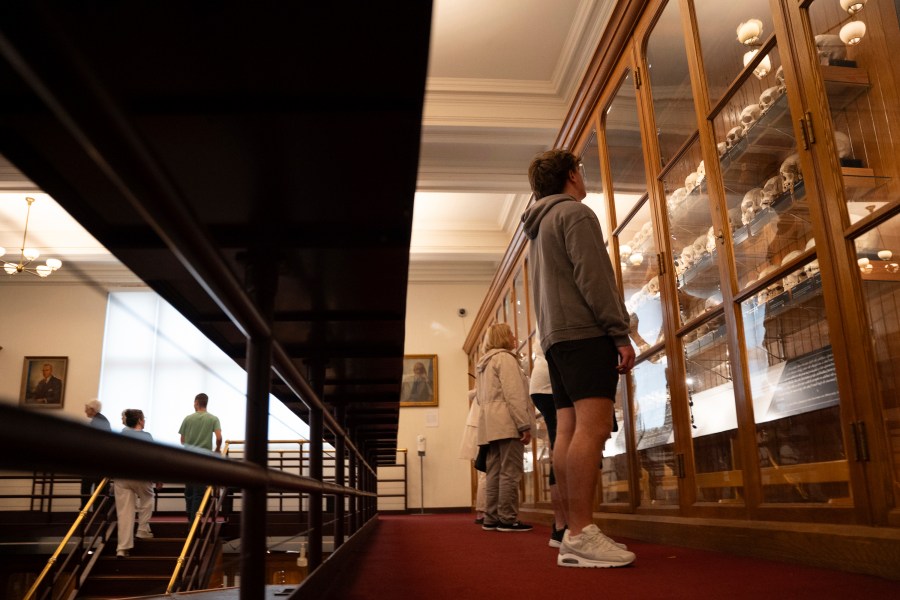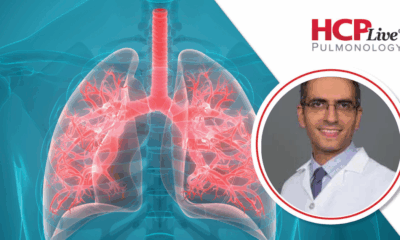Health
Philadelphia’s Mutter Museum Revises Ethical Policies on Human Remains

A significant shift is underway at the Mutter Museum in Philadelphia as it updates its policies regarding the collection and display of human remains. The museum aims to align with modern ethical standards while addressing the historical context of its extensive collection, which includes approximately 6,500 organs, bones, and other body parts.
The College of Physicians of Philadelphia, which oversees the museum, has announced new restrictions on photography and video of human remains, allowing such activities only with prior permission from museum officials. Public photography remains prohibited. According to Sara Ray, the museum’s director of interpretation and engagement, “The museum will allow photography as long as it serves an educational purpose.” Ray emphasizes that the definition of educational use is broad and will be refined over time.
Historical Context and Ethical Considerations
The majority of the museum’s human remains were collected between 1840 and 1940, primarily from Philadelphia. These specimens were utilized for medical education during a time when such collections were common among medical societies. Unfortunately, many of the methods used to acquire these remains are now regarded as ethically unacceptable, with some specimens believed to have been obtained under duress or through coercive means.
The museum’s new policy acknowledges that several remains are linked to scientific racism and that about 50 specimens are thought to be of Native American origin. In a move to address these past wrongs, the museum has repatriated nine remains since April 2024 to two tribes and one Native Hawaiian group.
As part of its commitment to ethical practices, the museum is also working to “de-anonymize” its collection. This involves investigating the personal histories of the human remains to provide a more comprehensive narrative that respects their individual stories. Researchers are utilizing various records to discover the backgrounds of these specimens, although they are not relying on DNA analysis. Ray notes, “The goal is not finding an identity for finding an identity’s sake. The goal is to find an identity so that we can build a richer biographical profile.”
Future Directions and Public Engagement
The museum’s revised policies come after a two-year review aimed at involving the public in shaping its future. As part of this initiative, hundreds of educational videos that were previously removed from YouTube are being restored. These videos will provide updated information on the collection and related topics, enriching the visitor experience.
The Mutter Museum also plans to significantly limit future acquisitions of human remains. Possible new donations may come from living individuals or through bequests, but the museum reserves the right to decline such offers.
Visitors like Ashley Davis have expressed appreciation for the museum’s efforts to educate the public about the lives of the individuals represented in the collection. Davis remarked, “I think it’s important to know where these come from. These were human beings.”
Since its inception, the Mutter Museum has evolved from the private collection of surgeon Dr. Thomas Dent Mutter, who donated 1,700 objects and $30,000 in 1859 to establish the museum. Today, it attracts approximately 100,000 visitors annually and houses over 35,000 objects, alongside a medical library containing half a million items.
These changes reflect a growing recognition of the need for ethical stewardship in the management of human remains, ensuring that the museum honors its past while educating future generations.
-

 Technology5 months ago
Technology5 months agoDiscover the Top 10 Calorie Counting Apps of 2025
-

 Health2 months ago
Health2 months agoBella Hadid Shares Health Update After Treatment for Lyme Disease
-

 Health3 months ago
Health3 months agoErin Bates Shares Recovery Update Following Sepsis Complications
-

 Technology4 months ago
Technology4 months agoDiscover How to Reverse Image Search Using ChatGPT Effortlessly
-

 Technology1 month ago
Technology1 month agoDiscover 2025’s Top GPUs for Exceptional 4K Gaming Performance
-

 Technology2 months ago
Technology2 months agoElectric Moto Influencer Surronster Arrested in Tijuana
-

 Technology5 months ago
Technology5 months agoMeta Initiates $60B AI Data Center Expansion, Starting in Ohio
-

 Technology5 months ago
Technology5 months agoRecovering a Suspended TikTok Account: A Step-by-Step Guide
-

 Health4 months ago
Health4 months agoTested: Rab Firewall Mountain Jacket Survives Harsh Conditions
-

 Lifestyle5 months ago
Lifestyle5 months agoBelton Family Reunites After Daughter Survives Hill Country Floods
-

 Technology4 months ago
Technology4 months agoHarmonic Launches AI Chatbot App to Transform Mathematical Reasoning
-

 Technology3 months ago
Technology3 months agoUncovering the Top Five Most Challenging Motorcycles to Ride





















